Field symptoms of rootstock blight in apples
Fire blight in apples can cause rootstock blight in apple trees, a serious infection that’ll leave trees dead the following season.
A significant economic detriment of fire blight is the ability of the fire blight pathogen Erwinia amylovora to kill trees. Tree death is due to rootstock blight, a fire blight infection that kills the rootstock, killing the scion as well.
Apple trees of any age can be killed by rootstock blight if they are grafted on a fire blight-susceptible rootstock. However, rootstock blight is most common in younger trees (less than 8 years old).
Apple trees with rootstock blight exhibit a characteristic “look” in the weeks following bloom (see photos). The tree shows little to no growth and leaves are sparse and look sickly and yellow. Most characteristic, the branches exhibit a golden color that is quite distinct when compared to neighboring, healthy trees. Often, there are no visible fire blight strikes on the scion at the time a rootstock infection is diagnosed. Trees exhibiting these telltale symptoms will be dead the following season.
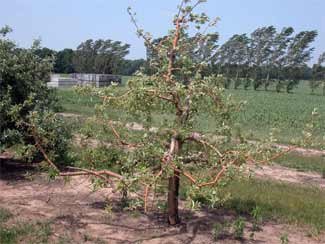
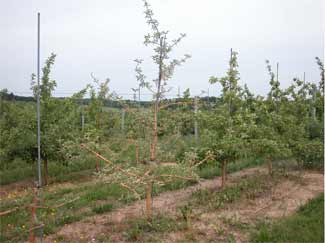
Trees with visible rootstock blight should be removed as soon as possible to reduce any chance of further spread of the pathogen. The scions of these trees should be cut off and removed from the orchard. Leave enough scion to enable the roots to be pulled out. Leave the remaining trunk piece and roots on the ground and let these roots dry out prior to removal from the orchard to limit the risk of further spread of the pathogen.
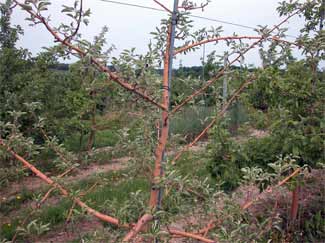
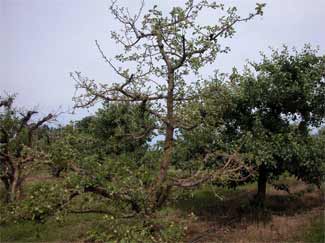
Contact George Sundin or one of our MSU tree fruit Extension educators if you suspect that you have trees dying of rootstock blight.
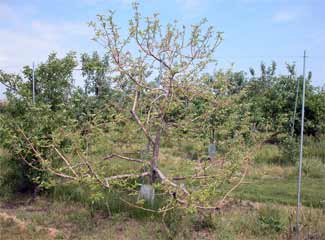
Dr. Sundin’s work is funded in part by MSU’s AgBioResearch.



 Print
Print Email
Email




